Top MBA Recruiters: Kaiser Permanente

Finding a job post-MBA is at once exciting and challenging. There are thousands of new opportunities before you that you’ll have to choose between, and that can leave you feeling overwhelmed. What happens if you choose Career A over Career B? Which employer will offer an MBA graduate the best perks and potential? What industry offers the most job satisfaction?
While there’s no single right answer, there are a few employers that stand out for MBAs. These are companies that actively recruit MBAs and have programs in place to enhance the first job experience. One such top MBA recruiter is Kaiser Permanente.
About Kaiser Permanente
Kaiser Permanente is a consortium of for-profit and not-for-profit healthcare entities based in Oakland, California. Founded in 1945, the company is made up of three distinct interdependent groups: Kaiser Foundation Health Plan, Inc. (KFHP), Kaiser Foundation Hospitals, and Permanente Medical Groups. Currently, Kaiser operates in eight states and one district (Hawaii, Washington, Oregon, California, Colorado, Maryland, Virginia, Georgia, and Washington DC) and is the largest managed healthcare organization in the U.S.
- 11.7 million health plan members
- 208,975 employees
- 21,275 physicians and 54,072 nurses
- 39 medical centers
- 720 medical facilities
- $72.7 billion in revenue
- $3.8 billion in net income
What Is Kaiser Permanente Like for MBAs?
As the largest healthcare organization in the states, Kaiser Permanente has many unique opportunities available for MBA graduates. Not only does the company host internships each summer, but they also offer multiple early career opportunities lasting anywhere from six months to two years in a variety of areas from finance to marketing, sales, and administration.
The great part about choosing Kaiser Permanente as an MBA is that it means you don’t have to choose between a health insurance company and a hospital. Kaiser rolls together health plans, hospitals, and medical groups all in one, allowing MBAs to test their skills in a variety of settings. And hire they do, each year Kaiser hires hundreds of MBAs to fill positions throughout their organization.
As for working at Kaiser, 83 percent of employees say it’s a great place to work offering great challenges (86 percent), great atmosphere (89 percent), and great rewards (88 percent). Some of those rewards include unique benefits and perks such as KP WELL (KP Women Embracing Life and Leadership), which is a program to help women learn, connect, and develop their experience. Kaiser is also known for having a healthy workforce with multiple programs and tools for keeping their employees healthy in mind, body, and spirit.
It’s no wonder that Kaiser ranks 16th overall on the Great Places to Work list of the ‘Best Workplaces in Health Care and Biopharma in 2018,’ and ranked 43rd on the Great Places to Work list of the ‘Best Workplaces for Diversity in 2017.’
Among other benefits of working for Kaiser is a healthy salary. According to PayScale, MBAs can expect to earn around $108,000. However, salary varies based on experience and job with Executive MBAs earning $149,000, and MBAs with focuses in business administration earn $112,000.
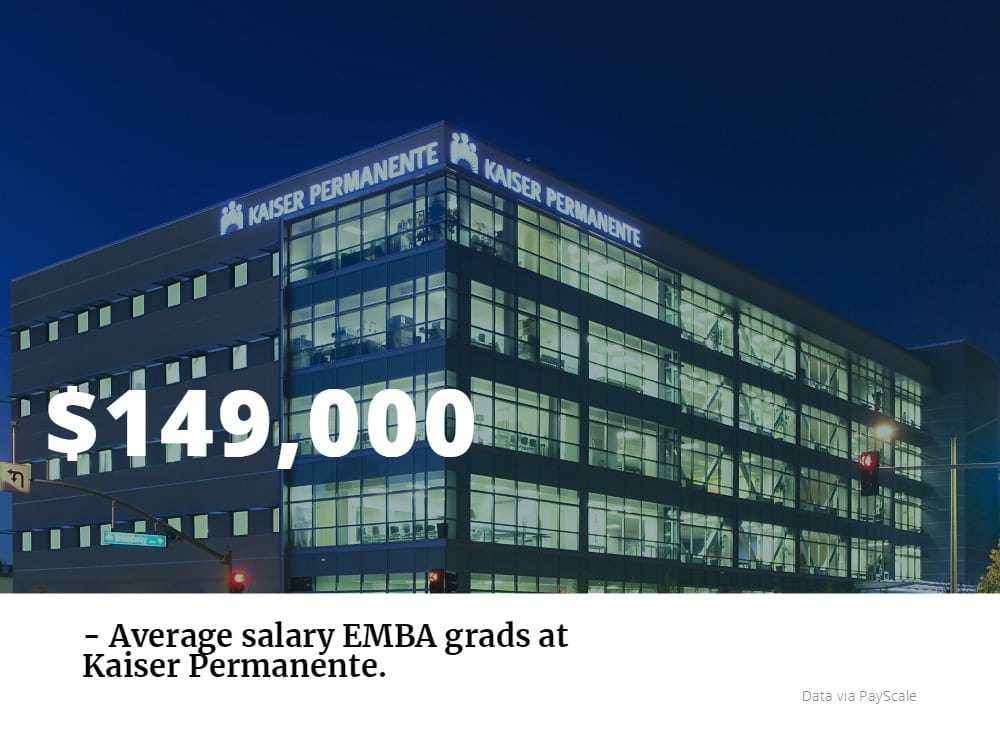
Several of the most prominent business schools to offer a healthcare-focused MBA include:
- The Wharton School – Health Care Management MBA
- Columbia Business School – Health and Pharmaceutical Management MBA
- UCLA Anderson – Health Care Management MBA
The Kaiser Permanente Careers Search
MBAs should first consider a summer internship during on the Kaiser Permanente careers search. These internship programs are in a variety of locations, including California, Washington, and Oregon. In particular, MBAs should consider the Business Functions Internship, or Northwest Internship programs.
Both internships last 10 to 12 weeks (typically June through August) with recruiting from January to April. As interns, MBAs work on real-world projects and initiatives, like developing and analyzing financial data, supporting technology initiatives, and conducting market research. Areas of interest for the corporate internships include:
- Finance
- National facilities services
- Human resources
- Internal audit services
- Marketing
- Sales
- Service and administration
Join Kaiser Permanente’s University Talent Network to learn more.
After completing an internship, MBAs can join Kaiser in one of its many early-career opportunities programs. There are multiple programs available including:
- Marketing & Sales Program: One year working on marketing and sales strategy while also undergoing professional development through job shadowing, exposure to leadership, and educational experiences.
- Finance Fellowship Program: This two-year fellowship consists of three rotation assignments and is designed for new graduate candidates interested in a finance career.
- California Administrative Fellowship Program: This 12-or-24-month fellowship consists of two or three rotations at medical centers around Northern or Southern California.
What Does Kaiser Look for in MBA Candidates?
When hiring MBAs for a full-time position or internship opportunity, Kaiser looks for individuals with technical, business, and leadership skills. In particular, candidates with strong leadership, agility, quantitative, and communication skills are highly sought after. For consideration, you need a strong interest in the healthcare industry.
To get started, search for Kaiser Permanente careers here.
What are the Most Successful MBA Startups of 2018?

Earlier this month, LinkedIn released its 2018 list for the Top Startups in the U.S. The list includes 50 of the newest successful startups in the U.S. Most specifically, the list analyzes young companies that are experiencing exceptional employee growth, increasing interest, member engagement, and talent. The social media platform used its network of 575 million members to see which startups commanded the most attention and had the most top talent. To be eligible, startups need to be less than seven years old, have at least 50 employees, and be privately held and headquartered in the U.S.
We decided to take a look at the list and see which of these year’s startups were founded by an MBA. This list is by no means exhaustive, but quickly we were able to find founders and CEOs with MBAs from top universities such as USC Marshall, Wharton, Harvard Business School, and Columbia Business School. Continue reading…
5 Highest Paying MBA Internships in Philadelphia

The moment you decide to earn your MBA, you should already be thinking about your MBA internship. Within the first few months of your education, you’ll be discussing your internship opportunities and soon afterward, applying. For the most part, you’ll choose your internship based on your career interests, but there’s one other aspect to consider: the pay.
MBA interns can earn impressive hourly wages, which may be a shock if you’re still thinking like an undergraduate student who worked an entire summer for free. But is an MBA internship salary something to sneeze at? It could be depending on your job function, industry, and the company you work for. So, who pays the most?
We dug into Philadelphia MBA internships to find out which companies would pay the most, and here’s what we discovered. Continue reading…
Wharton Welcomes its MBA Class of 2020

With students in the Wharton MBA Class of 2020 settling on campus, Deputy Vice Dean Maryellen Reilly took to the school’s MBA Admissions Blog to welcome the new class.
The Wharton MBA Class of 2020
Although application volume is down, the average GMAT score rose to the school’s previous record high of 732. This score matched the Wharton MBA Class of 2017.
“This class is an impressive collection of leaders from all walks of life, backgrounds, nationalities, industry experiences, and ambitions,” Reilly writes. “These newest members of the Wharton community bring with them a wide-range of perspectives to enrich their shared experiences both in and outside of the classroom.”
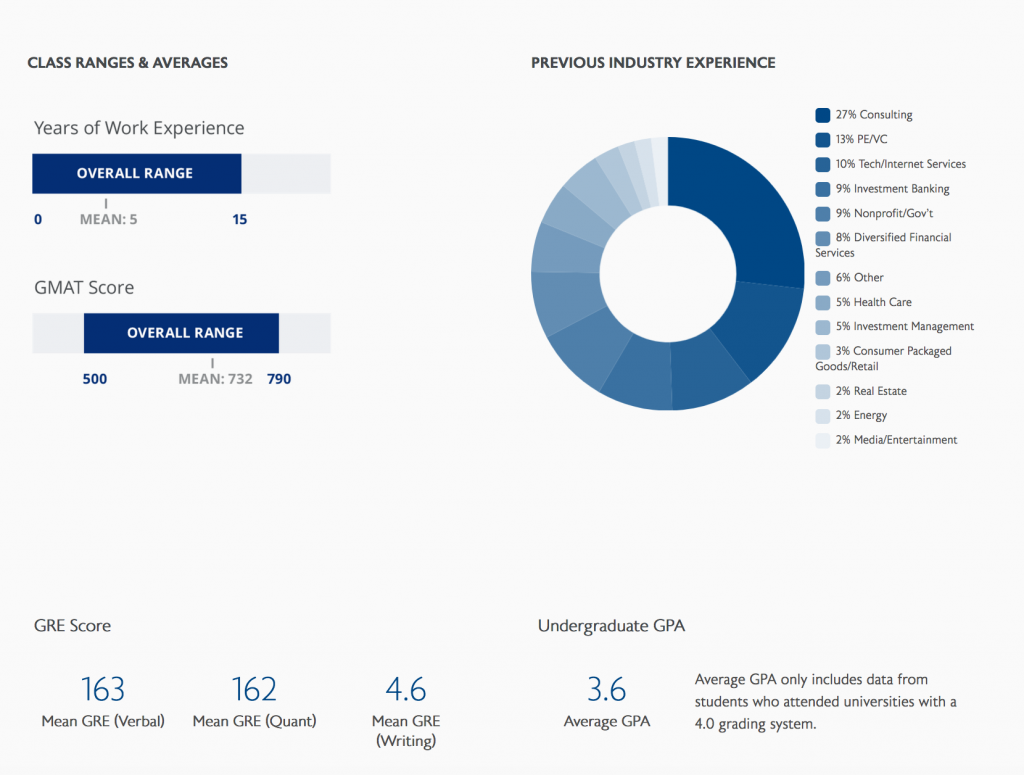
Application volume fell by 6.7 percent, dropping from 6,692 to 6,245. But here Wharton is in good company.
It is difficult to find a leading U.S. school reporting that applications were increasing measurably year over year. The vast majority are sharing that numbers are decreasing, or at best remaining steady.
Perhaps one of the biggest shifts between last year’s class and this year’s is the uptick in humanities undergrads, increasing to 45 percent from 41 percent. Students with STEM backgrounds make up another 29 percent of the class, trailing those in business, at 26 percent.
Around 33 percent of the incoming class is international, increasing from 32 percent last year. Although students this year hail from 80 different countries, compared to just 65 one year ago. U.S. students of color make up another third of this year’s class, not changing from last year.
There are 862 students in the Class of 2020, one shy of the previous class. The percentage of female students slipped one point, to 43 percent.
In terms of prior work experience, former consultants outnumber all others by a considerable margin, making up 27 percent of the class, up from 26 percent last year. The next-largest group, at 13 percent, comes from private equity/venture capital, with 10 percent of tech students following closely.
For the whole view of the Class of 2020, check out the Wharton profile here. As well, get familiar with the school’s MBA programs here.
This article has been edited and republished with permissions from our sister site, Clear Admit.
Wharton Economist, Berkeley Alum Ann Harrison Named New Haas Dean

Ann Harrison, a renowned economist and member of the faculty at the University of Pennsylvania’s Wharton School, has been named the next dean of the UC Berkeley Haas School of Business. Harrison earned her undergraduate degree from Berkeley and served as a professor in Berkeley’s Department of Agricultural and Resource Economics from 2001 to 2011.
“Professor Harrison is an accomplished administrator as well as a world-class economist who has dedicated her career to creating forward-looking policies in development economics, international trade, and global labor markets,” Berkeley Chancellor Carol Christ said in a statement announcing the appointment. “It is a great honor to welcome her back to Berkeley to become the dean of Haas, and I have no doubt that she will be a wonderful leader the institution.”
Harrison, who will begin her term on January 1, 2019, said she is thrilled to return to Berkeley and looks forward to meeting Haas students and alumni and working with its distinguished faculty and staff, according to the release from the school.
Harrison worked as director of development policy at the World Bank before joining the Wharton faculty in 2012, co-managing a team of 300 researchers and staff. In her time with the World Bank, she reformed its research fund allocation process and supervised its most important publications, including the annual World Development Report. Setting a milestone in transparency for the institution, she convinced the World Bank’s president to release all historical records on project loans.
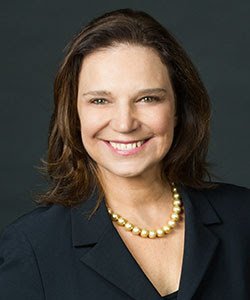
Ann Harrison named new Haas dean
“Ann has a remarkable track record of pioneering research on trade and development, including influential studies of globalization’s effects on jobs and inequality,” Berkeley Economics Professor Maurice Obstfeld said in a statement. Obstfeld serves as chief economist at the International Monetary Fund and was a colleague of Harrison’s when she worked in Berkeley’s Agricultural and Resource Economics Department.
Princeton Professor Emeritus Sir Angus Deaton, who has known Harrison since her days as a graduate student at Princeton, praised her appointment. “Based on Ann’s experience at the World Bank, she will be an effective and much-loved manager,” said Deaton, who also holds the 2015 Nobel Laureate in Economic Sciences for his analysis of consumption, poverty, and welfare.
In addition to a Ph.D. in economics from Princeton, Harrison also holds a diplôme d’études universitaires générales from the University of Paris and is a research associate at the National Bureau of Economic Research and a member of the United Nations Committee for Development Policy. Author and editor of three books—including Globalization and Poverty and The Factory-Free Economy—Harrison is one of the most highly cited scholars globally on foreign investment and multinational firms.
Harrison replaces outgoing Dean Rich Lyons, who stepped down in June 2018 after serving as Haas dean for the past 11 years. He plans to return to teaching at Haas after completing a sabbatical. Haas Professor Laura Tyson, who has served as interim dean since Lyons’ departure, will remain in the role until January, 2019.
This article has been edited and published with permissions from our sister site, Clear Admit.
Are Business School Neighborhoods Becoming More Gentrified?

When universities are found in downtown urban areas, gentrification most often follows. It almost seems inevitable since universities bring in more individuals with higher education, draw in more money, and increase new businesses. But what does the rapid increase of gentrification statistics mean for the business school students looking to start their career in a new area?
What Is Gentrification?
First, we need to look at what gentrification is. In simple terms, it’s the influx of more affluent residents moving into urbanized neighborhoods. At the outset, it may sound good, but it can be controversial.
Gentrification may improve the financial quality of a neighborhood, but it can also force the relocation of current residents and businesses due to increasing costs. Often, the process of gentrification also shifts a neighborhood’s racial and ethnic composition, as well as the average household income. This can lead to community displacement for lower-income families in gentrified areas, some of which often live in the area for several generations.
However, there is a grey area. Gentrification happens when a location becomes increasingly attractive. At that point, more high-income individuals move into the area bringing in investments in the community and leading to improved infrastructure and economic development.
What Causes Gentrification?
According to a recent comprehensive review of gentrification completed by researchers at UC Berkeley and UCLA, gentrification most often occurs when more public transportation is available. People are more attracted to transit hubs because they allow more privileged groups to trade car commutes for transit and signal a large-scale commitment to neighborhood upgrading, which, in turn, leads to increased employment opportunities.
Another spur to gentrification is education. Quality schools, universities, colleges, and medical centers tend to shape gentrification. The substantial federal support that public universities receive brings money into neighborhoods through many means including housing and housing subsidies for faculty and staff. A CityLab study revealed that universities and other academic institutions are key to attracting the creative class, creating more market demand and political pressure for better amenities, schools, and other services.
Analyzing University Neighborhood Gentrification Statistics
Since universities have such an impact on gentrification, we thought we’d take a look at what areas and schools have been most affected. While gentrification is not something most urban areas should aspire for, it happens, and it’s important to know where it’s occurring the most.
To find out, we looked at a recent study by RentCafe of the most gentrified areas in the U.S. The study took a look at the 2000 Census and the 2016 American Community Survey to see the changes that took place over a decade and a half across 1,000 U.S. ZIP codes. The study found that there are easy ways to quantify gentrification statistics when looking at median home value, median household income, and the population that holds a bachelor’s or higher degree.
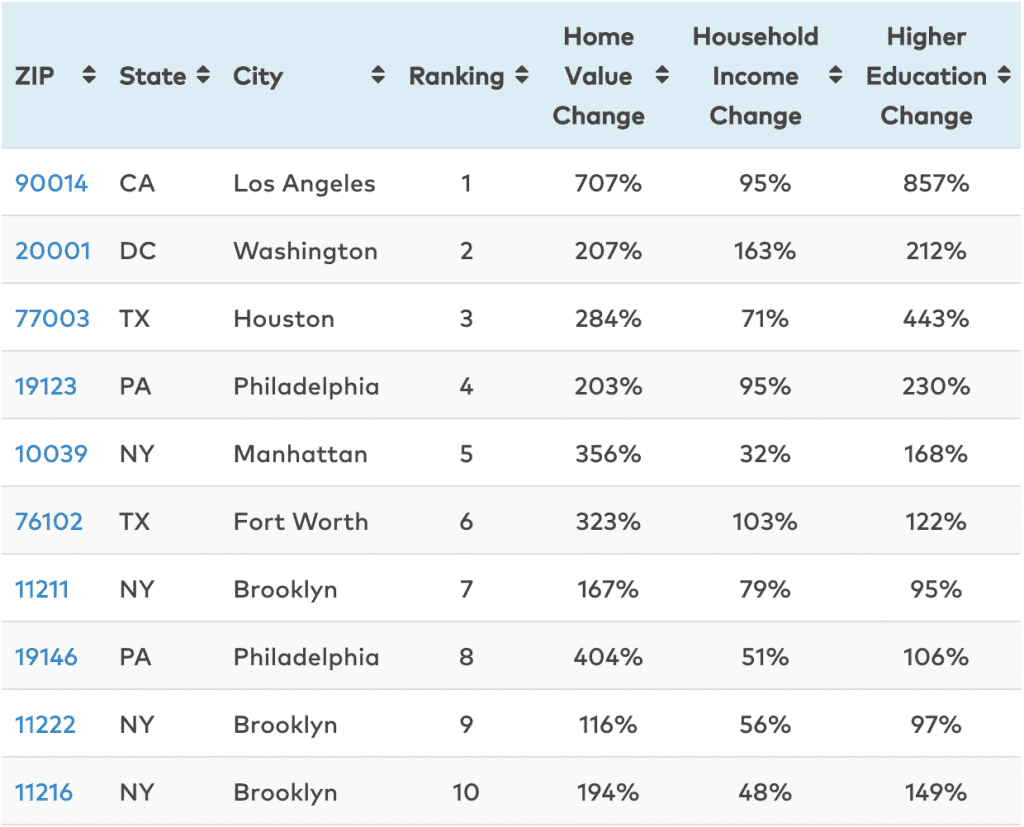
Based on the results of the study, we analyzed the top five MetroMBA universities in gentrified areas.
-
University of Southern California
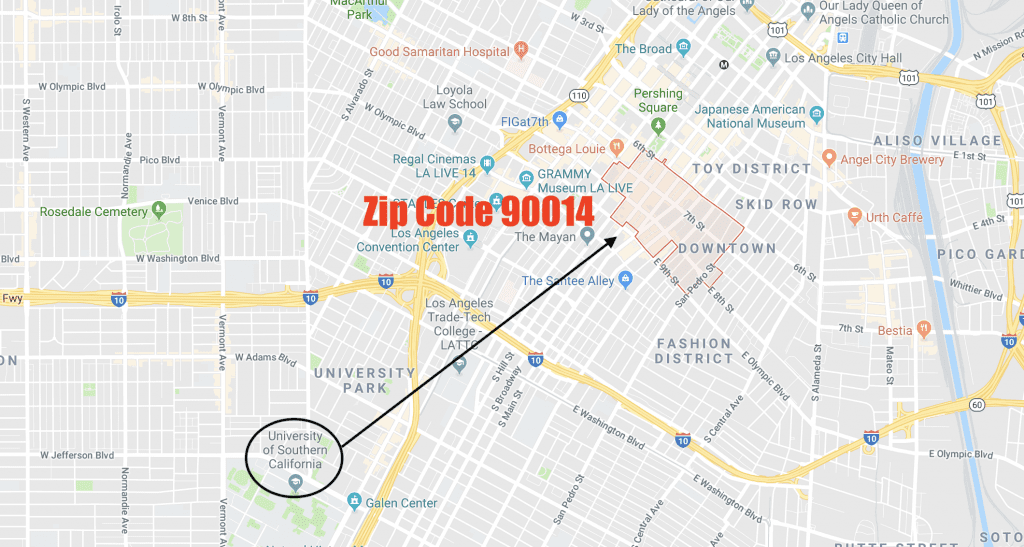
Located less than five miles away from ZIP code 90014 in Los Angeles, USC Marshall is just on the edge of the most gentrified area in the U.S. Over the last 16 years, this area has witnessed:
- A 707 percent increase in home values
- A 95 percent increase in median household income
- And an 857 percent increase in people holding bachelors or higher degrees
So, while some at USC might be fighting gentrification, it may not be working. Just last year, USC opened up a brand-new $700 million USC Village with a Target Express, Trader Joe’s, and 15 restaurants, transforming the surrounding neighborhood. And even though as part of the development USC provided $20 million for construction of off-site subsidized housing, there are still concerns.
“Across the street, land values are going to increase,” Joe Donlin, Associate Director of Strategic Actions for a Just Economy, told KPCC. “We know the landlords are going to rent at higher levels of rent.”
-
Howard University
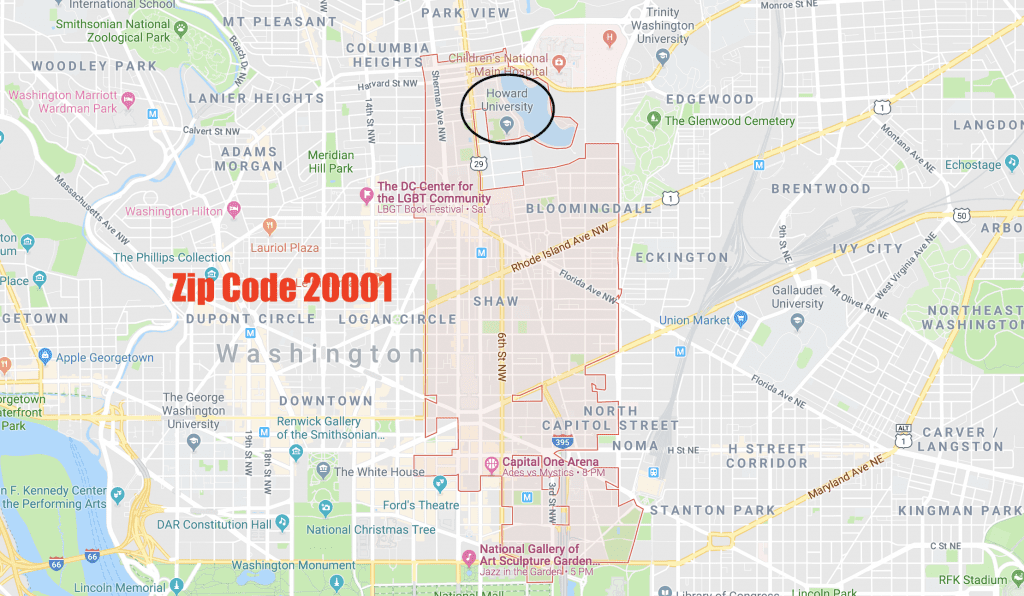
Located in Washington, D.C. Zip Code 20001, Howard University’s campus is located directly in the second most gentrified area in the U.S. Over 16 years, the area has witnessed:
- A 207 percent increase in home values
- A 163 percent increase in median household income
- And a 212 percent increase in people holding bachelors or higher degrees
The gentrification statistics of the Howard University area hasn’t gone unnoticed. According to NPR, there has been a drastic change:
“The area, located just a couple of miles north of Capitol Hill, was once working-class and black. But as hundreds of new residents move to D.C. each month, more non-black residents move into Howard’s neighborhood. And as property values rise, the university is trying to capitalize on the hot real estate market.”
-
University of Houston — Downtown
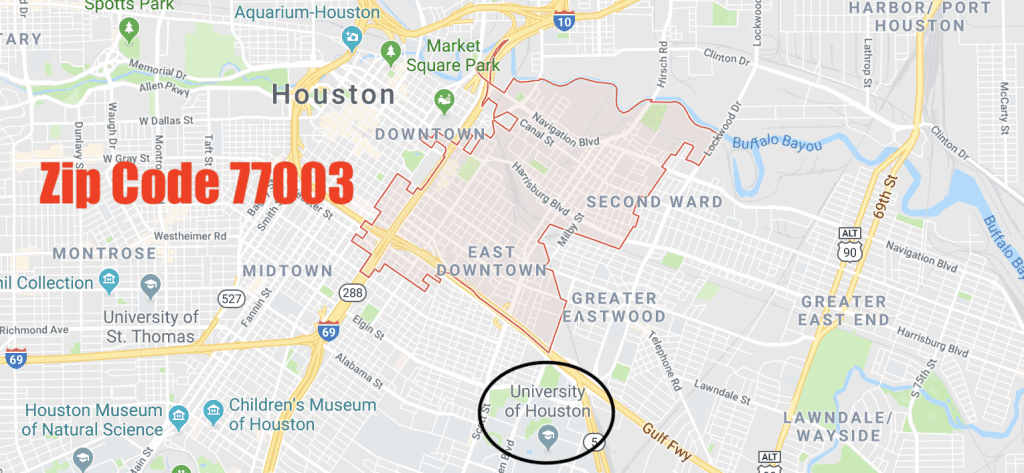
Located just steps away from zip code 77003, The University of Houston campus is located near the third most gentrified area in the U.S. In the last decade and a half, the area has seen:
- A 284 percent increase in home values
- A 71 percent increase in median household income
- And a 443 percent increase in people holding bachelors or higher degrees
Much of the gentrification can be laid at the university’s feet as its student housing footprint has expanded into surrounding neighborhoods over the last decades. According to the Houston Chronicle, “In the portion of the neighborhood closest to downtown, which includes Emancipation Park, median home values increased 176 percent between 2000 and 2013, according to an analysis of census estimates conducted by Governing.”
-
University of Pennsylvania
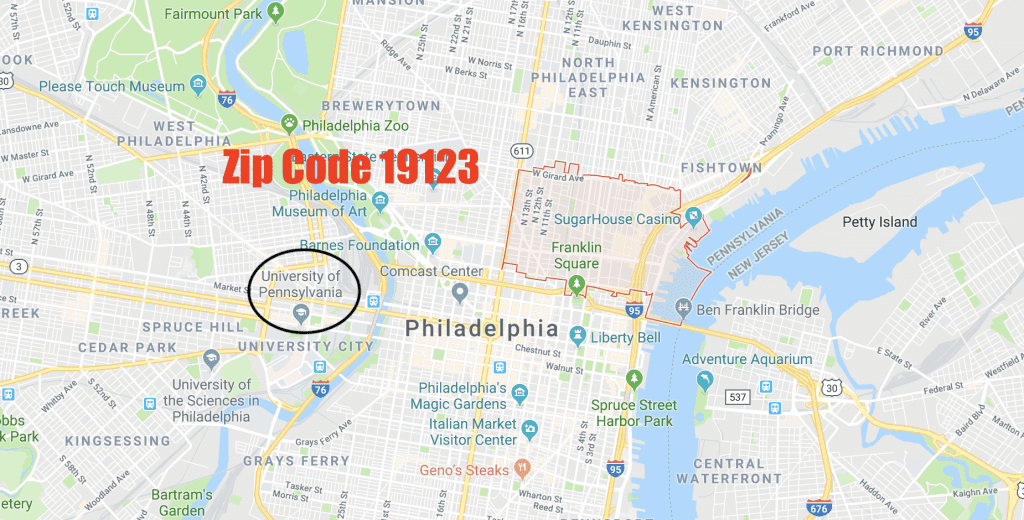
The Wharton School at UPenn is less than five miles outside the fourth most gentrified neighborhood in the country: zip code 19123. This area, over the last 16 years, has noticed:
- A 203 percent increase in home values
- A 95 percent increase in median household income
- And a 230 percent increase in people holding bachelors or higher degrees.
In fact, UPenn has had a complicated history with gentrification over the years, dubbed Penntrification by some. The problem, according to The Daily Pennsylvania, is that in West Philadelphia Penn students’ demand for housing is displacing low-income families. There have even been protests criticizing the university for causing gentrification in the area.
-
Texas Christian University
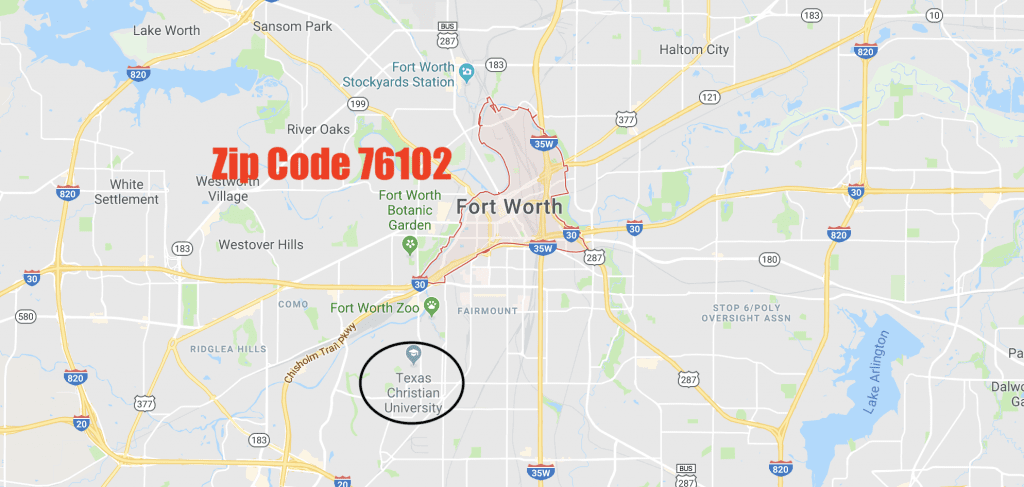
Fort Worth, TX, contains the sixth most gentrified area in the U.S.; just two miles away from Texas Christian University (TCU). Over 16 years, the area has witnessed:
- A 323 percent increase in home values
- A 103 percent increase in median household income
- And a 122 percent increase in people holding bachelors or higher degrees
While Fort Worth’s growth has brought new life to the city’s urban core, it’s also sky-rocketed property values. In particular, the areas around TCU are growing quickly. The university recently completed a $100 million renovation for its football stadium—just five years after its last overhaul, which reportedly cost $164 million.
